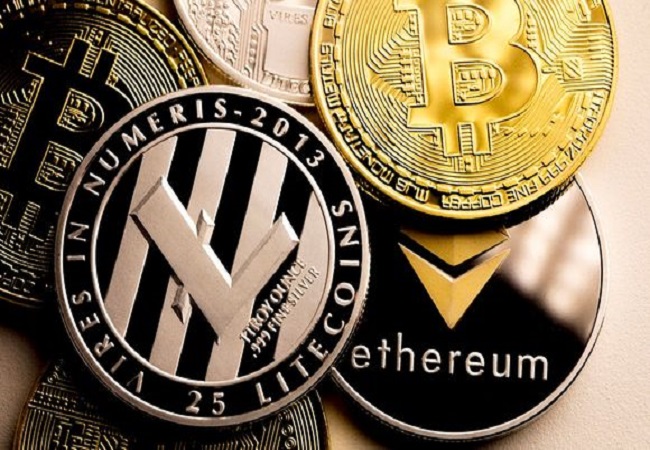 Democracy Dies in Digital Dollars Table of Contents If the world needs a higher level of functioning democracy, then a central bank digital currency should see to the end of such aspirations.“No denarius,” the pot-bellied Gaul threw the Roman silver coin back at the Roman merchant.“I’ll need you to pay for your stay in real silver.” In the northern fringes of what would eventually become modern-day France, Rome’s power was at its weakest, and its currency, not universally accepted.At its zenith in 117 AD, the Roman Empire spanned some 1.5 million square miles and the Emperor ruled over 130 million Roman subjects.And during that time, the denarius, was the lifeblood of the Roman Empire.In the early days of Roman rule, the denarius held about 4.5 grams of pure silver.But with a finite supply of silver and gold entering the Empire, Roman spending was limited by the amount of denarii that could be minted, making the financing of such vanity projects such as the Circus Maximus and the Colosseum challenging.To overcome the physically limited supply of precious metals, Roman officials resorted to alchemy of the worst sort, decreasing the purity of coinage, thus being able to make more quasi-silver coins with the same face value.
Democracy Dies in Digital Dollars Table of Contents If the world needs a higher level of functioning democracy, then a central bank digital currency should see to the end of such aspirations.“No denarius,” the pot-bellied Gaul threw the Roman silver coin back at the Roman merchant.“I’ll need you to pay for your stay in real silver.” In the northern fringes of what would eventually become modern-day France, Rome’s power was at its weakest, and its currency, not universally accepted.At its zenith in 117 AD, the Roman Empire spanned some 1.5 million square miles and the Emperor ruled over 130 million Roman subjects.And during that time, the denarius, was the lifeblood of the Roman Empire.In the early days of Roman rule, the denarius held about 4.5 grams of pure silver.But with a finite supply of silver and gold entering the Empire, Roman spending was limited by the amount of denarii that could be minted, making the financing of such vanity projects such as the Circus Maximus and the Colosseum challenging.To overcome the physically limited supply of precious metals, Roman officials resorted to alchemy of the worst sort, decreasing the purity of coinage, thus being able to make more quasi-silver coins with the same face value.
With more coins in circulation, the Roman Empire could spend more and as it became addicted to spending more, so too did the content of silver in every denarius.And at the fringes of the Roman Empire, where Rome’s influence was at its weakest, merchants wouldn’t even accept denarii, insisting instead on gold or silver not coined by the Romans.
While the real effects of Rome’s debasement of the denarius took years to materialize, adding more coins of poorer quality into circulation did not help increase prosperity, instead it transferred wealth away from the people through inflation.As Romans realized that the value of their silver coinage was being debased, they started demanding more denarii for the same amount of goods and services and by 265 AD, when there was only 0.5% of silver left in a denarius, prices across the Roman Empire skyrocketed by 1,000%.Soaring administrative and logistical costs and no fresh sources of precious metals to plunder from enemies meant that the Roman government had to look to the people to sustain the Empire — by raising taxes.By the end of the 3rd Century AD, any trade in the Roman Empire had collapsed to the local level, using inefficient barter methods and without any meaningful medium of exchange.Could history be repeating itself? While focus has been around BTC and cryptocurrencies, a quiet revolution in central bank digital currencies, which typically aim to let people deposit funds directly with a central bank, bypassing commercial banks, is taking place.
These central bank digital currencies or CBDCs are a new incarnation of money, but really, it’s more of the same with a technological wrapper.
With the promise of making finance work better, CBDCs also result in a shift of power from individuals to the state, altering geopolitics, and fundamentally change how capital is allocated and money works.When BTC first emerged in the aftermath of the 2008 Financial Crisis, it barely registered on central bankers’ radar, much less invited imitation.And when central bankers did mention BTC, it was almost always dismissively and as the butt of jokes for years at conferences held at well-appointed ski resorts attended by the 1% of the 1%.Then Facebook proposed its own Libra cryptocurrency for its users and central bankers started to take notice.
Whereas a fringe movement with a handful of adopters was one thing, to have their significant seigniorage and sovereignty challenged by a global social media network that answered to no one was another thing altogether.If You Can’t Beat’em Almost overnight, central representing the top 50 global economies and constituting the majority of global GDP got to work on considering or even issuing their own CBDCs.To date, according to data from the Bank of International Settlements, no less than 80% of central banks globally are either considering launching their own CBDC, in the preparatory stages of doing so, or already have done so.But while CBDCs may use the same decentralized blockchain technology used by BTC and its ilk, it comes with a twist — the centralization of power in the state.
The idea behind CBDCs is seductive in its simplicity.Rather than holding an account with a retail bank, depositors would hold an account directly with the central bank through an interface resembling current digital payment service providers.Instead of writing checks or paying with a credit card, citizens could leverage the central bank’s existing payment rails using CBDCs guaranteed by the full faith of the state, instead of a fallible bank that is prone to government bailouts.Far from being an experiment, the Bahamas has already issued its own CBDC and China has rolled out a digital yuan to over half a million people.The European Union wants a virtual euro by 2025, the United Kingdom has launched a taskforce to study a digital pound, and the U.S.is already building a hypothetical digital dollar.
Ostensibly, central banks’ sudden shift to embrace digital payments and CBDCs stems from a desire to increase payment efficiency and reduce transaction friction.But the more basic reason for central banks to rush out CBDCs is the fear of losing control.As more institutions and merchants start to accept cryptocurrencies, there is a genuine risk that parallel, private and decentralized mediums of exchange undermine the sovereignty of national currencies.Let’s not forget that the idea of a nation state is a fairly new concept.Whilst most of us may imagine that the idea of state as a static, permanent hegemon, the concept is far more plastic than given credit for.
Nation states and national identities are a fairly modern construct.Not so long ago, the world was either governed by powerful warlords, aristocrats and monarchs and armed forces worked for the highest bidder.Their payment method of choice? Gold.Accepted globally, gold was the currency of commerce and conflict and few soldiers of fortune would accept a national coinage unless that coinage was in a precious metal and could be tested.That changed of course as technology improved and nations came to be defined through national identities and in many cases, arbitrarily drawn borders.
And as more nation states developed, more currencies (often with the smiling faces of their dictators) were issued.But what some despots soon learned was that while you could oppress a population with your own banana money within its borders, commerce would always find a way so long as alternatives were available.Is it any wonder then that in many failed states or dictatorships, the U.S.dollar is widely used and accepted? The threat of alternative currencies is too potent for governments, particularly totalitarian regimes, to ignore.So when it became increasingly apparent that people could use an alternative currency that would be accepted globally and required nothing more than a smartphone to transact with, governments responded.Bully for BTC China saw how powerful digital payment service providers like Alipay and WeChat Pay came to dominate the monetary system and Beijing recognized the urgency with which to launch its own CBDC to breakup the influence of these unsupervised private networks.If payments, deposits and loans migrate from banks into privately run digital realms, as became the case for Alibaba’s Ant Financial, central banks would struggle to mange the economic cycle and inject funds into the system during a crisis.One of the results of the coronavirus pandemic was to highlight the challenges facing governments looking to deliver stimulus payments to the scores of unbanked.
Even in the United States, over 6% of households or a total of 14.1 million American adults are unbanked, according to a most recent National Survey of Unbanked and Underbanked Households by the Federal Deposit Insurance Corporation and a CBDC could put those households back on the banking grid.Because a CBDC needs nothing more than a digital wallet, the cost of banking the unbanked becomes negligible and stimulus payments could be “airdropped” directly into citizens’ digital wallets.For ordinary citizens, the appeal of a safe, free, instant and universal means of payment would be immeasurable.Across the world, billions of people remain unbanked because the cost of maintaining a bank account for them outweighs the benefits from the perspective of a commercial bank.But a CBDC would allow such individuals to have a direct deposit with the central bank, negating account minimums and dramatically reducing the cost to bank otherwise unprofitable individual depositors.CBDCs then have the potential to cut operating expenses of the global financial industry, which currently amounts to over US$350 a year for every person on the planet.A CBDC could potentially make finance accessible for the 1.7 billion people who lack even a basic bank account.But CBDCs are not all rainbows and unicorns.
Decentralize This Unconstrained, the network effect of CBDCs would make it hard for citizens to opt out, and put central bankers in the uncomfortable position of having to deal directly with the tricky business of making loans to citizens and businesses, a role for which they are not currently well-equipped to perform.Worse, crony capitalism could be replaced by crony central bank digital currencies, with the decision on who gets what loans and how much, now a very much more political affair (more than it currently already is).And a CBDC would allow governments and central banks to monitor how citizens spend their money and provide governments with levels of surveillance far in excess of what they currently possess.Beijing has already said that it does not as a matter of course monitor digital yuan transactions, but that could change in a heartbeat, and surveillance could very easily increase, especially if governments deem such monitoring to be an issue of national security.
Worse, governments could take it upon themselves to digitally erase the financial existence of dissidents, political activists, journalists and any other figures that they deem to be a threat.The same way that digital wallet addresses for cryptocurrencies can be “whitelisted,” governments can also “blacklist” the payment of CBDCs towards specific causes, whether political or otherwise, that they deem to be contrary to their own political goals.And whereas cash can be used to escape a country, a CBDC could be frozen by the powers that be, preventing capital from leaving borders and stymying any hope of escape from political oppression.That Beijing, which prizes control over all else, was also the first major economy to launch its own CBDC, should be telling.
Central bank digital currencies may be the next great experiment in finance, or another tool for centralizing state control, either way, the people are the test subjects.The post Democracy Dies in Digital Dollars appeared first on SuperCryptoNews.
Source.
